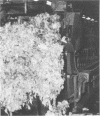Abstract
All the 303 full time day workers in a carpet weaving factory were submitted to a physical examination, chest radiography, and vitalograph test, and answered a respiratory questionnaire. Fifty four healthy non-exposed subjects served as controls. Dust concentrations and concentrations of bacterial endotoxin were measured. Of the 303 workers, 259 (85.5%) had airway symptoms and 62 (20.5%) had maximum mid-expiratory flow (MMF) values of less than 60% compared with 9.2% of the controls. The symptoms in 68 workers (22%) were compatible with byssinosis and 36 of these workers underwent vitalography before starting work and after four hours work on Mondays when significant reductions of their FEV1 and MMF were found. Twenty one of these 36 workers were tested on Tuesday and no differences in these measurements were found between measurements before work started and four hours later. The airborne dust concentrations in the factory were high and bacterial endotoxin was found. These findings suggest that a large number of workers in this carpet weaving factory suffer from a disease indistinguishable from byssinosis even though wool is used almost exclusively, the only cotton being the warp. The finding of endotoxin together with the absence of cotton confirms the theory that "byssinosis" is due to bacterial endotoxin rather than to cotton per se.
Full text
PDF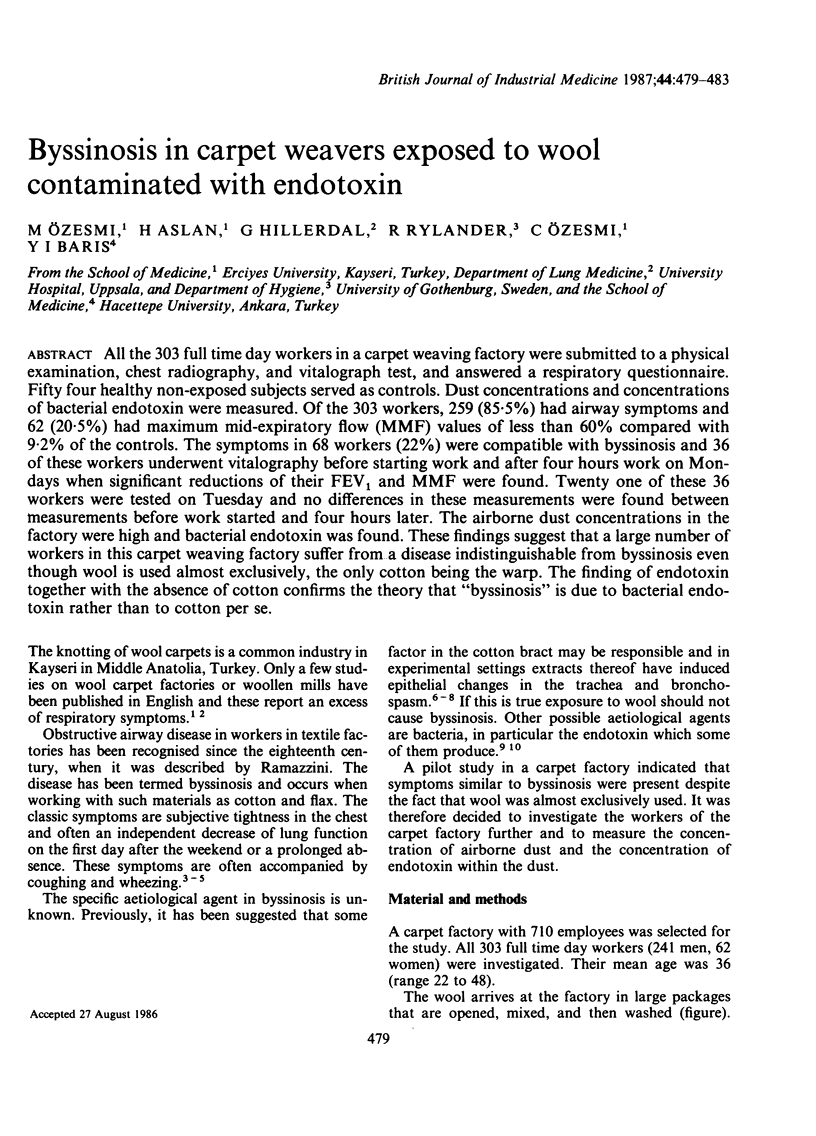

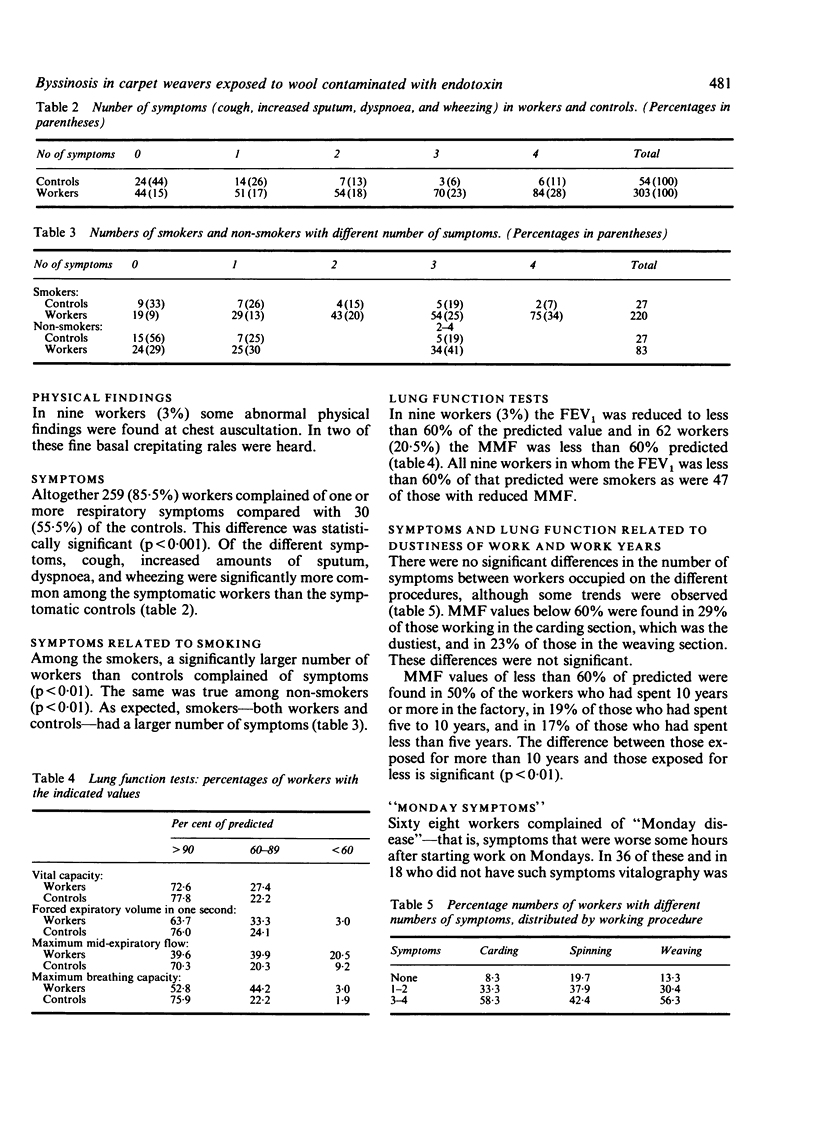
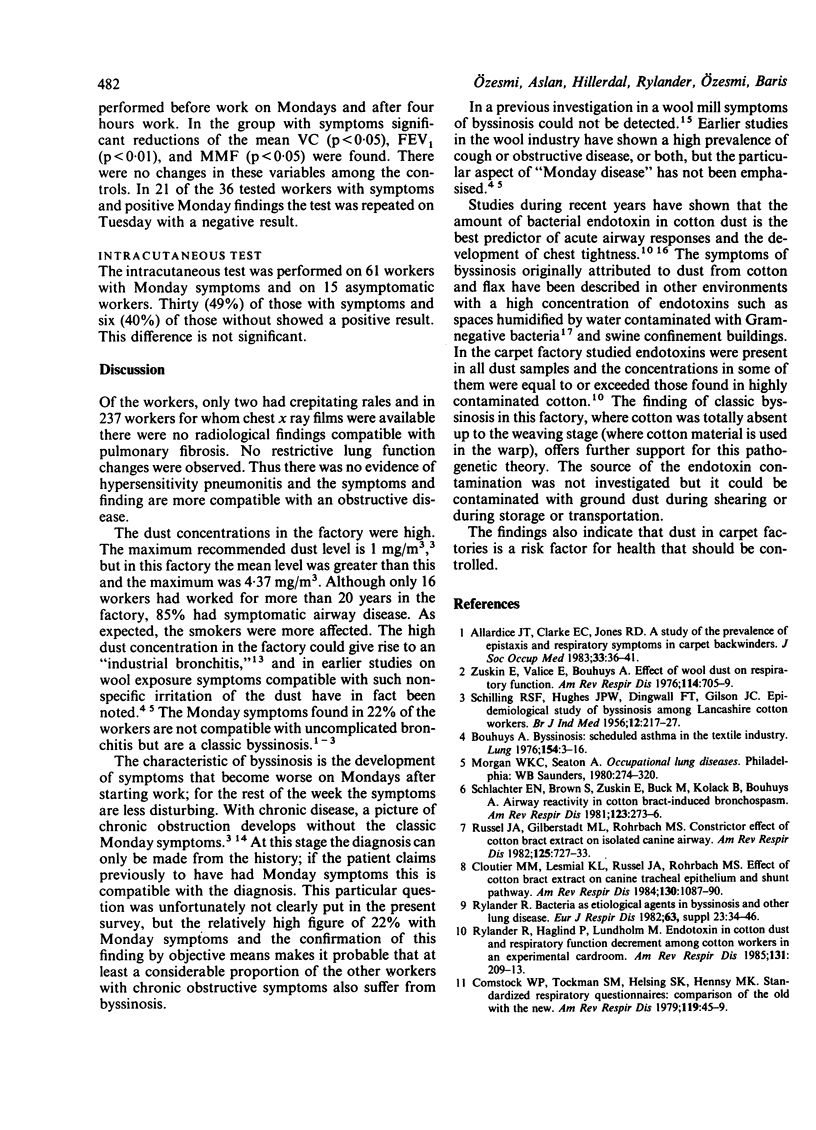
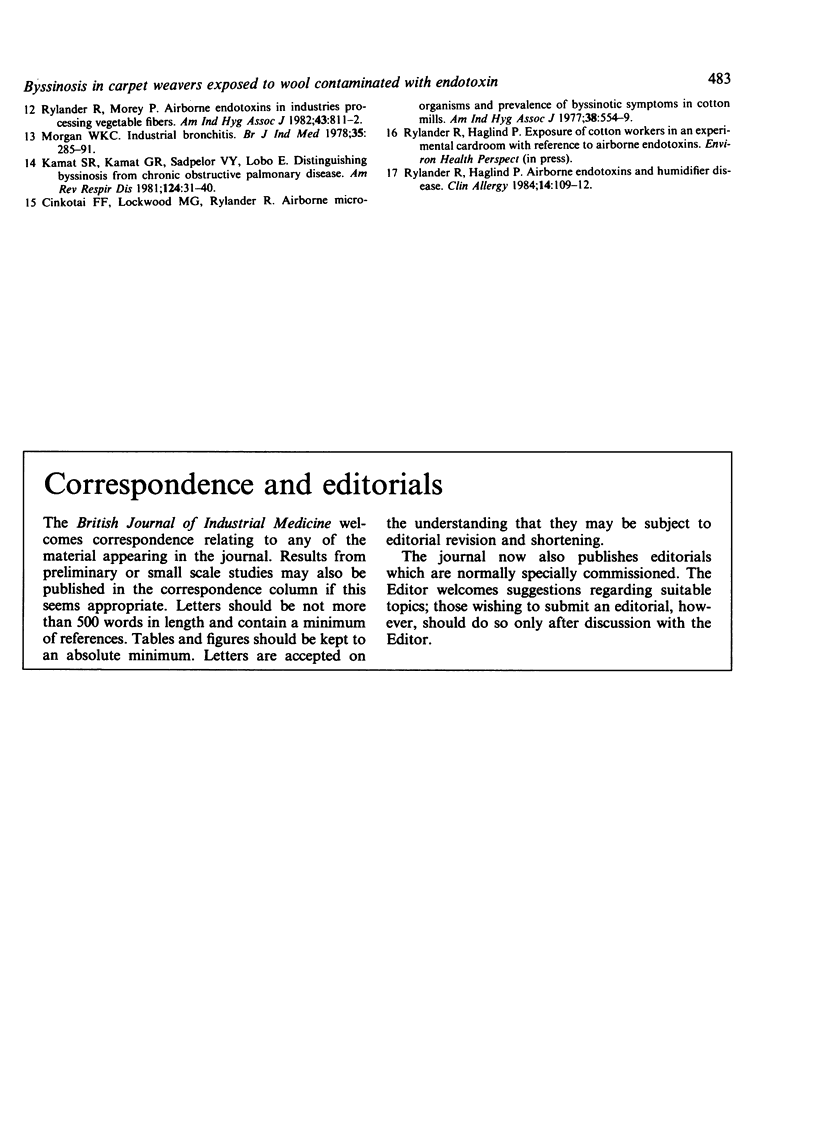
Images in this article
Selected References
These references are in PubMed. This may not be the complete list of references from this article.
- Allardice J. T., Clarke E. C., Jones R. D. A study of the prevalence of epistaxis and respiratory symptoms in carpet backwinders. J Soc Occup Med. 1983 Jan;33(1):36–41. doi: 10.1093/occmed/33.1.36. [DOI] [PubMed] [Google Scholar]
- Bouhuys A. Byssinosis: scheduled asthma in the textile industry. Lung. 1976 Dec 29;154(1):3–16. doi: 10.1007/BF02713514. [DOI] [PubMed] [Google Scholar]
- Cinkotai F. F., Lockwood M. G., Rylander R. Airborne micro-organisms and prevalence of byssinotic symptoms in cotton mills. Am Ind Hyg Assoc J. 1977 Oct;38(10):554–559. doi: 10.1080/0002889778507669. [DOI] [PubMed] [Google Scholar]
- Cloutier M. M., Lesniak K. M., Russell J. A., Rohrbach M. S. Effect of cotton bracts extract on canine tracheal epithelium and shunt pathway. Am Rev Respir Dis. 1984 Dec;130(6):1087–1090. doi: 10.1164/arrd.1984.130.6.1087. [DOI] [PubMed] [Google Scholar]
- Comstock G. W., Tockman M. S., Helsing K. J., Hennesy K. M. Standardized respiratory questionnaires: comparison of the old with the new. Am Rev Respir Dis. 1979 Jan;119(1):45–53. doi: 10.1164/arrd.1979.119.1.45. [DOI] [PubMed] [Google Scholar]
- Kamat S. R., Kamat G. R., Salpekar V. Y., Lobo E. Distinguishing byssinosis from chronic obstructive pulmonary disease. Results of a prospective five-year study of cotton mill workers in India. Am Rev Respir Dis. 1981 Jul;124(1):31–40. doi: 10.1164/arrd.1981.124.1.31. [DOI] [PubMed] [Google Scholar]
- Morgan W. K. Industrial bronchitis. Br J Ind Med. 1978 Nov;35(4):285–291. doi: 10.1136/oem.35.4.285. [DOI] [PMC free article] [PubMed] [Google Scholar]
- Russell J. A., Gilberstadt M. L., Rohrbach M. S. Constrictor effect of cotton bract extract on isolated canine airways. Am Rev Respir Dis. 1982 Jun;125(6):727–733. doi: 10.1164/arrd.1982.125.6.727. [DOI] [PubMed] [Google Scholar]
- Rylander R. Bacteria as etiological agents in byssinosis and other lung disease. Eur J Respir Dis Suppl. 1982;123:34–46. [PubMed] [Google Scholar]
- Rylander R., Haglind P. Airborne endotoxins and humidifier disease. Clin Allergy. 1984 Jan;14(1):109–112. doi: 10.1111/j.1365-2222.1984.tb02197.x. [DOI] [PubMed] [Google Scholar]
- Rylander R., Haglind P., Lundholm M. Endotoxin in cotton dust and respiratory function decrement among cotton workers in an experimental cardroom. Am Rev Respir Dis. 1985 Feb;131(2):209–213. doi: 10.1164/arrd.1985.131.2.209. [DOI] [PubMed] [Google Scholar]
- Rylander R., Morey P. Airborne endotoxin in industries processing vegetable fibers. Am Ind Hyg Assoc J. 1982 Nov;43(11):811–812. doi: 10.1080/15298668291410611. [DOI] [PubMed] [Google Scholar]
- SCHILLING R. S., HUGHES J. P., DINGWALL-FORDYCE I., GILSON J. C. An epidemiological study of byssinosis among Lancashire cotton workers. Br J Ind Med. 1955 Jul;12(3):217–227. doi: 10.1136/oem.12.3.217. [DOI] [PMC free article] [PubMed] [Google Scholar]
- Schachter E. N., Brown S., Zuskin E., Buck M., Kolack B., Bouhuys A. Airway reactivity in cotton bract-induced bronchospasm. Am Rev Respir Dis. 1981 Mar;123(3):273–276. doi: 10.1164/arrd.1981.123.3.273. [DOI] [PubMed] [Google Scholar]
- Zuskin E., Valic F., Bouhuys A. Effect of wool dust on respiratory function. Am Rev Respir Dis. 1976 Oct;114(4):705–709. doi: 10.1164/arrd.1976.114.4.705. [DOI] [PubMed] [Google Scholar]



